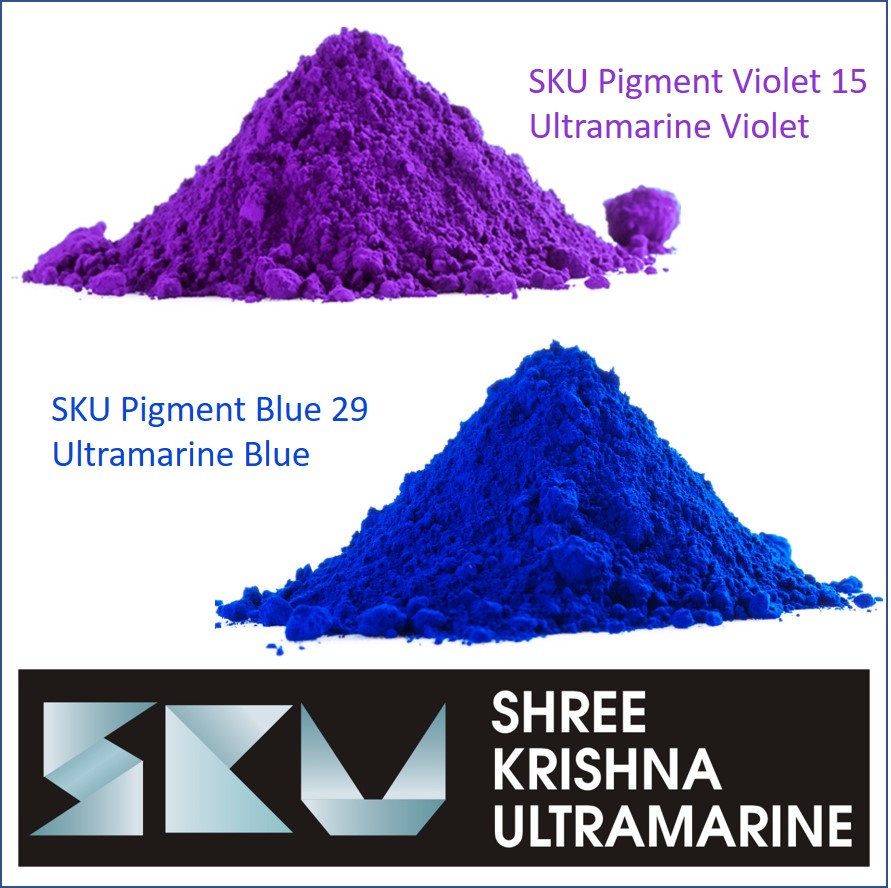Ultramarine Pigments: From Ancient Art to Modern Industry

For thousands of years, color has shaped art, design, and industry. Among the most significant hues, Ultramarine remains unmatched for its depth and richness. Today, companies like SKU Pigments supply high-quality Ultramarine pigments, including Ultramarine Blue, Ultramarine Violet, Pigment Blue 29, and Pigment Violet. From construction and cosmetics, Ultramarine has become the mainstay of modern blue pigments.
Tracing Ultramarine from Lapis Lazuli to Industry
The name Ultramarine comes from the Latin “ultra mare,” meaning “beyond the sea,” a reference to lapis lazuli originally imported from Afghanistan. For centuries, it was the most expensive pigment, used by Renaissance masters to illuminate manuscripts. It symbolized luxury and spirituality.
Modern chemistry made it possible to manufacture Ultramarine pigments, bringing the once-exclusive shade into everyday use. This breakthrough turned a exclusive pigment into a widely available solution for countless sectors.
The Versatility of Pigment Blue 29
Ultramarine Blue pigments—the synthetic form of Pigment Blue 29—are the most widely used. Known for their stability, they are perfect for sensitive applications. They are used in:
• Architectural and industrial paints for rich tones.
• Plastics and rubber, thanks to UV resistance.
• Publishing and packaging, where clarity is vital.
• Personal care, given their safety profile.
This balance of performance and safety keeps Ultramarine Blue among the most demanded pigments.
The Elegant Appeal of Violet Shades
Ultramarine Violet offers delicate hues that appeal in specialty coatings. Pigment Violet derived from Ultramarine is highly dispersible, making it ideal for children’s toys.
Its gentle color enhances Ultramarine Violet fine art, while ensuring longevity without chemical breakdown.
How Pigment Blue 29 Powers Industries
Pigment Blue—particularly Ultramarine Blue pigments—remains a market leader. It offers tinting strength for:
• Automotive paints with lasting vibrancy.
• Packaging, ensuring consistent identity.
• Construction materials, adding functionality and design.
This multi-industry demand ensures Pigment Blue’s future relevance.
The Benefits of Blue and Violet Pigments
• Non-Toxic & Safe: Certified safe for consumer goods.
• Heat & Light Resistant: Reliable even in high-heat industries.
• Eco-Friendly: Reduced environmental impact.
• Cost-Effective: Economical mass use.
• Versatile: From fashion to infrastructure.
Ultramarine in Modern Industries
1. Paints & Coatings: Durable architectural shades.
2. Plastics & Rubber: Stable in polymers.
3. Cosmetics: Eyeshadow and nail polish.
4. Construction: Plaster and decorative finishes.
5. Printing & Inks: Precision printing.
Why Choose SKU Pigments?
SKU Pigments stands among global suppliers, offering reliability in Ultramarine pigments. Their product portfolio includes:
• synthetic Ultramarine for vibrant, bold applications.
• Ultramarine Violet and Pigment Violet for luxury tones.
• Custom shades for tailored applications.
Their reputation is built on consistent quality and green practices.
Conclusion
From a rare treasure to an eco-friendly modern solution, Ultramarine has remained relevant for centuries. Whether it’s the timeless vibrancy of Ultramarine Blue, the subtle elegance of Ultramarine Violet, or the stability of Pigment Blue 29, Ultramarine pigments remain unrivaled.
With SKU Pigments as a global supplier, industries secure reliable pigment supply. As demand for sustainable pigments rises, Ultramarine will stay ahead in global markets.
Common Queries About Ultramarine
1. What is Ultramarine?
A vibrant pigment from lapis lazuli, now produced synthetically.
2. What is Pigment Blue 29?
A widely used industrial pigment.
3. Where is Ultramarine Violet used?
In fine arts and specialty industries.
4. Are Ultramarine pigments safe?
Trusted globally for safety.
5. Why choose SKU Pigments?
Trusted supplier worldwide.